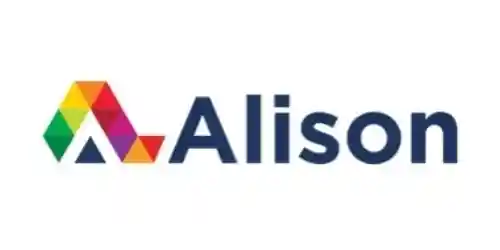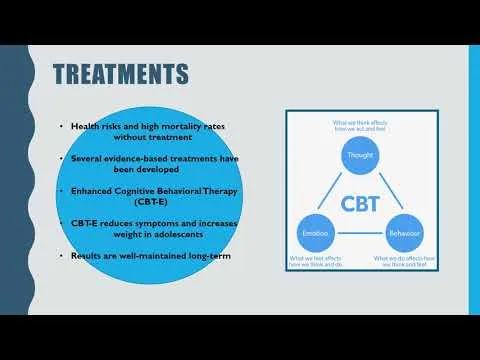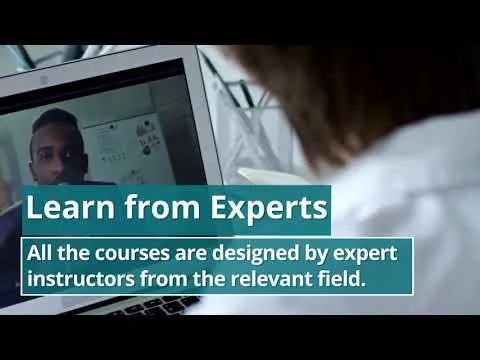
Introduction to Cognitive Therapy 
"Introduction to Cognitive Therapy: Master the Art of Cartoon Drawing and Bring Your Characters to Life! This course is perfect for absolute beginners who want to learn the basics of cartoon drawing and create 3D characters from scratch. No previous drawing knowledge is required. You will learn how to draw 3D shapes, set up one-point perspective, create character skeletons, and transform stick figures into dynamic, lifelike characters. Take your skills to the next level by exploring advanced techniques like shading, texture detail, and anatomy. Start your artistic journey today and unlock endless possibilities in animation, comics, and more!" ▼
ADVERTISEMENT
Course Feature
![]() Cost:
Cost:
Free
![]() Provider:
Provider:
Alison
![]() Certificate:
Certificate:
No Information
![]() Language:
Language:
English
Course Overview
❗The content presented here is sourced directly from Alison platform. For comprehensive course details, including enrollment information, simply click on the 'Go to class' link on our website.
Updated in [September 26th, 2023]
What does this course tell?
(Please note that the following overview content is from the original platform)
Welcome to Cartoon Drawing: For The Absolute Beginner! In this course, you will learn the basics of cartoon drawing and how to create a 3D character from a stick-man. You will be introduced to the tools and techniques needed to draw basic 3D shapes at different angles, draw interior and exterior contour lines, set up one-point perspective, create the character's skeleton, draw geometrical shapes in one-point perspective, transform the stick figure into 3-dimensions, erase guidelines, add bend, movement and center of gravity, and convert geometrical forms into organic forms. No previous drawing knowledge is required to start.
This course will provide you with the basic tools and techniques needed to draw cartoon characters from scratch. You will learn how to draw 3D shapes, set up one-point perspective, create the character's skeleton, and transform the stick figure into 3-dimensions. You will also learn how to add bend, movement and center of gravity, and convert geometrical forms into organic forms.
Possible Development Directions: you can move on to more advanced techniques to bring your characters to the next level. You can also explore other cartoon drawing techniques such as shading, texture detail, and anatomy.
Related Learning Suggestions: To further your cartoon drawing skills, you can also look for other courses and tutorials online. You can also practice drawing from your head and experiment with different styles and techniques. Don't forget to claim your FREE Art Lesson *BOOSTERPACK*!
[Applications]Upon completion of Cartoon Drawing: For The Absolute Beginner!, learners will have the skills to create 3D characters from simple shapes, understand the basics of one-point perspective, and draw characters from their imagination. Learners can apply these skills to create their own cartoon characters, as well as use them to create more realistic drawings. Additionally, learners can use the skills learned in this course to create characters for animation, comics, and other forms of art.
[Recommend Books]Cartooning: The Ultimate Character Design Book by Christopher Hart: This book is an excellent resource for those looking to take their cartoon drawing skills to the next level. It provides detailed instruction on how to create dynamic characters with personality and life. It covers topics such as facial expressions, body language, and clothing design. It also includes step-by-step tutorials on how to draw a variety of cartoon characters.
[Career Paths]1. Cartoon Animator: Cartoon animators create animated characters and stories for television, movies, video games, and other media. They use a variety of software and techniques to bring characters to life, including 3D modeling, rigging, and animation. As technology advances, the demand for cartoon animators is increasing, and the field is expected to grow significantly in the coming years.
2. Storyboard Artist: Storyboard artists create visual representations of stories and scripts for television, movies, and other media. They use a variety of techniques to create storyboards, including drawing, 3D modeling, and animation. Storyboard artists must have a strong understanding of the principles of animation and be able to create compelling visuals that capture the story.
3. Character Designer: Character designers create the look and feel of characters for television, movies, video games, and other media. They use a variety of techniques to create characters, including drawing, 3D modeling, and animation. Character designers must have a strong understanding of the principles of animation and be able to create characters that are visually appealing and capture the story.
4. Comic Book Artist: Comic book artists create comic books and graphic novels for publishers. They use a variety of techniques to create comics, including drawing, 3D modeling, and animation. Comic book artists must have a strong understanding of the principles of animation and be able to create visually appealing and dynamic comic book pages.
[Education Paths]1. Bachelor of Fine Arts (BFA): This degree program focuses on the development of artistic skills and techniques, as well as the history and theory of art. It is a great option for those interested in cartoon drawing, as it provides a comprehensive overview of the fundamentals of art and design. Additionally, the BFA program provides students with the opportunity to specialize in a particular area of art, such as cartoon drawing, and to develop their own unique style.
2. Master of Arts (MA): This degree program is designed to provide students with a deeper understanding of the history and theory of art, as well as the development of advanced artistic skills and techniques. It is a great option for those interested in cartoon drawing, as it provides a comprehensive overview of the fundamentals of art and design, as well as the opportunity to specialize in a particular area of art, such as cartoon drawing.
3. Master of Fine Arts (MFA): This degree program is designed to provide students with a comprehensive overview of the fundamentals of art and design, as well as the opportunity to specialize in a particular area of art, such as cartoon drawing. Additionally, the MFA program provides students with the opportunity to develop their own unique style and to explore the latest trends in the field.
4. Doctor of Philosophy (PhD): This degree program is designed to provide students with a comprehensive overview of the fundamentals of art and design, as well as the opportunity to specialize in a particular area of art, such as cartoon drawing. Additionally, the PhD program provides students with the opportunity to develop their own unique style and to explore the latest trends in the field, as well as to conduct research and develop new theories and methods.
We considered the value of this course from many aspects, and finally summarized it for you from two aspects: skills and knowledge, and the people who benefit from it:
(Please note that our content is optimized through artificial intelligence tools and carefully reviewed by our editorial staff.)
What skills and knowledge will you acquire during this course?Upon completion of the course "Introduction to Cognitive Therapy," learners will acquire the following skills and knowledge:
1. Understanding of cognitive therapy principles: Learners will gain a comprehensive understanding of the fundamental principles and concepts of cognitive therapy, including the cognitive model, automatic thoughts, cognitive distortions, and the role of beliefs and schemas in shaping thoughts and behaviors.
2. Assessment and formulation skills: Learners will develop the ability to conduct thorough assessments of clients' cognitive patterns and formulate individualized treatment plans based on their specific needs and goals.
3. Cognitive restructuring techniques: Learners will learn various cognitive restructuring techniques, such as identifying and challenging negative automatic thoughts, examining evidence for and against distorted beliefs, and developing more adaptive and realistic thinking patterns.
4. Behavioral activation strategies: Learners will acquire knowledge and skills in implementing behavioral activation techniques to help clients increase their engagement in pleasurable and meaningful activities, thereby improving their mood and overall well-being.
5. Problem-solving and coping skills training: Learners will learn how to teach clients effective problem-solving strategies and coping skills to manage stress, overcome obstacles, and enhance their ability to deal with challenging situations.
6. Relapse prevention: Learners will understand the importance of relapse prevention and learn strategies to help clients maintain the gains achieved during therapy and prevent relapse.
7. Cultural competence: Learners will develop an awareness and understanding of cultural factors that may influence the therapeutic process and learn how to adapt cognitive therapy techniques to meet the needs of diverse populations.
8. Ethical considerations: Learners will gain knowledge of ethical guidelines and considerations in the practice of cognitive therapy, including issues related to confidentiality, boundaries, and professional conduct.
Who will benefit from this course?
The course "Introduction to Cognitive Therapy" will benefit individuals who are interested in psychology, mental health, counseling, therapy, and related professions. This includes:
1. Psychologists: Psychologists can benefit from this course as it provides an introduction to cognitive therapy, which is a widely used therapeutic approach in the field of psychology. It will enhance their understanding of cognitive therapy techniques and strategies, allowing them to better assist their clients in overcoming cognitive distortions and improving their mental well-being.
2. Counselors: Counselors often incorporate cognitive therapy techniques into their practice to help clients identify and challenge negative thought patterns. This course will provide counselors with a solid foundation in cognitive therapy, enabling them to effectively apply these techniques in their counseling sessions.
3. Therapists: Therapists from various backgrounds, such as cognitive-behavioral therapists, can benefit from this course as it focuses on the principles and techniques of cognitive therapy. It will enhance their skills in helping clients identify and modify maladaptive thoughts and behaviors.
4. Mental Health Professionals: Mental health professionals, including psychiatrists and psychiatric nurses, can benefit from this course as it provides a comprehensive understanding of cognitive therapy. This knowledge can be integrated into their practice to complement other treatment modalities and improve patient outcomes.
5. Students and Researchers: Students pursuing degrees in psychology or related fields can benefit from this course as it provides a solid foundation in cognitive therapy. It will enhance their understanding of the theoretical underpinnings and practical applications of cognitive therapy, which can be valuable for their academic and research pursuits.
Course Syllabus
Cognitive Theory and Research on Anxiety
First, this module starts by explaining the conceptions and phrasing. You will view all the various applications of cognitive theory and research on anxiety. Next, the module provides information about dysfunctional cognition. Finally, the module will provide you with information on the benefits of reviewing comorbid substance use.Conditioning Theories
This module provides you with an introduction to Conditioning Theories. Using a step-by-step process you will see how to understand an overview of the cognitive model of anxiety. Finally, you will review the Penn state questionnaire, daily mood rating, and BDI-II.Course assessment
Course Provider

Provider Alison's Stats at AZClass
Discussion and Reviews
0.0 (Based on 0 reviews)
Explore Similar Online Courses

Create a Mockup in Figma

Introduction to Masonry

Python for Informatics: Exploring Information

Social Network Analysis

Introduction to Systematic Review and Meta-Analysis

The Analytics Edge

DCO042 - Python For Informatics

Causal Diagrams: Draw Your Assumptions Before Your Conclusions

Whole genome sequencing of bacterial genomes - tools and applications

Learn about CBT-E

Enhanced Cognitive Behavioral Therapy (CBT-E) for Anorexia


Start your review of Introduction to Cognitive Therapy